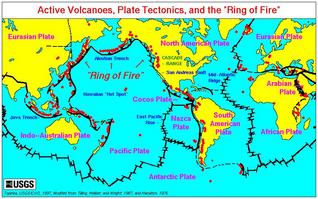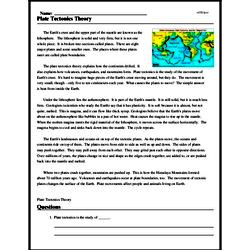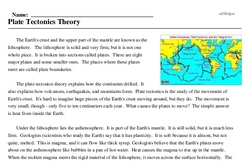Plate Tectonics Theory
The Earth's crust and the upper part of the mantle are known as the lithosphere. The lithosphere is solid and very firm, but it is not one whole piece. It is broken into sections called plates. There are eight major plates and some smaller ones. The places where these plates meet are called plate boundaries.
The plate tectonics theory explains how the continents drifted. It also explains how volcanoes, earthquakes, and mountains form. Plate tectonics is the study of the movement of Earth's crust. It's hard to imagine huge pieces of the Earth's crust moving around, but they do. The movement is very small, though - only five to ten centimeters each year. What causes the plates to move? The simple answer is heat from inside the Earth.
Under the lithosphere lies the asthenosphere. It is part of the Earth's mantle. It is still solid, but it is much less firm. Geologists (scientists who study the Earth) say that it has plasticity. It is soft because it is almost, but not quite, melted. This is magma, and it can flow like thick syrup. Geologists believe that the Earth's plates move about on the asthenosphere like bubbles in a pan of hot water. Heat causes the magma to rise up in the mantle. When the molten magma meets the rigid material of the lithosphere, it moves across the surface horizontally. The magma begins to cool and sinks back down into the mantle. The cycle repeats.




